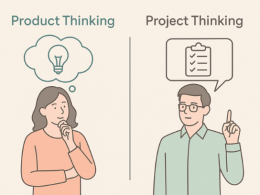The process of getting a new product idea from inception to launch can be a significant undertaking. This is where the product development life cycle comes in.
The Product Development Life Cycle (PDLC) provides an in-depth description of all activities teams perform to deliver an idea to the market and the target audience.
This includes recognizing market needs, conceptualizing the product, creating a product roadmap, releasing the product, and gathering feedback. Each stage of PDLC helps the company develop products that can survive several market changes and bring value to its customers.
7 stages of the Product Development Life Cycle
In this blog, we have categorized the 7 stages of the Product Development Life Cycle as follows:

1. Ideation or Brainstorming
This is where you develop your first product concept. Some of the team’s ideas might never see the light of day, but their most plausible ideas move forward to the next stage of your PDLC.
This stage aims to help you brainstorm a list of problems to solve or opportunities you can seize. There are many tried-and-true methods to develop creative product ideas and validate them.
-
Scamper
This is an idea-creating method where the team needs to Substitute, Combine, Adapt, Modify, Eliminate, and Reverse solutions already out there.
-
Mind-Mapping
When using the mind-mapping method, you write out ideas and concepts you like and determine ways to combine them.
-
Scientific Materials
Exploring the latest publications can help you find difficulties you didn’t notice before.
-
Crowdsourcing
Sometimes, discovering new ideas requires the experiences of several creators from various backgrounds to help them contact other creators and use their insights to develop new ideas.
2. Product Scope
During this stage, you, the product manager, and the designers work together to create the features that are going to be in your product. The upcoming steps in the PDLC are where you work to implement these features.
The end result of this stage is a specific, if-we-could-do-it-all version of the feature.
3. Wireframing/Prototyping
After settling on your product and its features, it’s time to build a prototype. This is where you will create a mockup or working version of the product using wireframing tools.
There are various prototyping tools you can use to get an idea of how your product will look, feel, and work. This information can also help you estimate the final cost and determine whether you’re on a budget.
4. First Iteration
With your prototype ready, you can now get early feedback from your target audience. It’s better to get feedback as soon as possible from your audience. So, you can release the “Alpha” version of your product.
This is because the product isn’t finished yet, and it’s a good idea to ensure that you’re heading in the right direction before a full launch in the future.
5. Product Testing
Now you’re ready to test and optimize your product. You can use various tests, such as field, market, compliance, or regression tests, to determine whether there’s room for improvement or if you overlooked anything.
Using feedback software can help you collect customer feedback and use this information to enhance your product.
6. Second Iteration
During this stage, you’re going to present the product, or its basic version, to your first customers.
The information they provide you can help you improve the functionality of your product and prepare it for its actual launch. The goal here is to increase your product’s value for your customers.
7. Public Launch
Even when your product is ready to go, if you don’t launch it strategically, it’s not going to reach your target audience accordingly.
It’s your job to market your product effectively. An excellent delivery plan can contribute as much to your product’s success as its quality.
The Cycle Continues
Your product development life cycle is an ongoing process in your product development strategy and doesn’t reach a final destination.
As your customers interact with your product, take as many notes as possible about their behavior and use the information to tweak existing features, add new ones, or make improvements to increase customer lifetime value.
Enroll in our Product Management certification and outshine the product world. Do feel free to check out our blog page to stay updated in the product management world.






